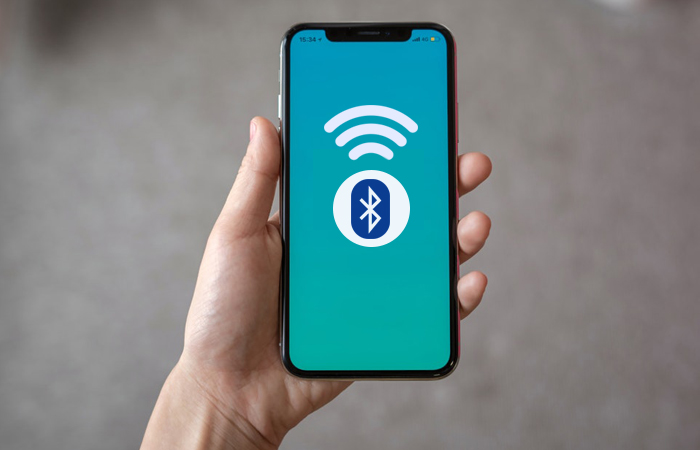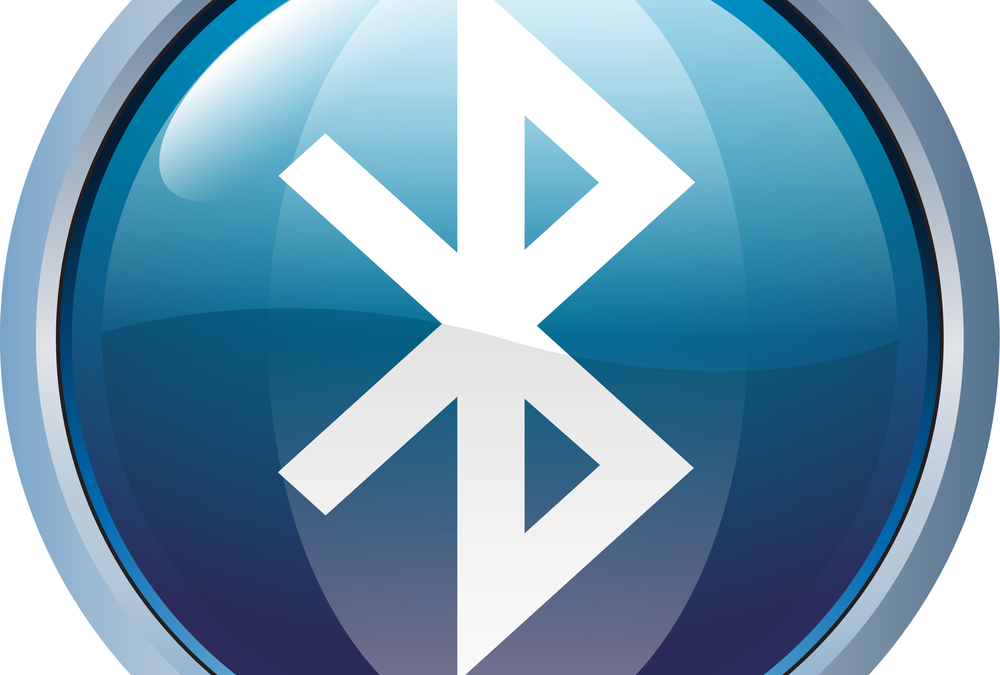It's likely hard for you to imagine a world without Bluetooth devices but it was not so long ago that we were introduced to this revolutionary invention. Bluetooth devices exist in the homes and automobiles of millions of Americans and sure help to make life a lot easier and enjoyable. Bluetooth devices allow us to communicate with friends, play our favorite music, listen to a fun audiobook while doing chores, and so much more. As these devices continue to evolve we find they become more sophisticated and that their Bluetooth range is expanded upon. What are the limits of today's devices? We will tell you.
Bluetooth technology came to be in 1997 and has since been incorporated into various electronics for communication between devices. In order for these devices to communicate, they must be within range of one another. Bluetooth range is pre-established by the strength of the signal in the device and, therefore, each device is different. Portable speakers, mobile phones, headsets, large sound systems, and more all boast a different Bluetooth range. Depending on your usage and needs, you will want to find devices with the right range.
What Is the Average Bluetooth Range?

The average Bluetooth range is about 328 feet or less and that is based on the power that the device can give off. Bluetooth devices are classified into three separate groups that boast a certain level of power based on the device they are placed in. Laptops, for instance, have a powerful Bluetooth range, while mobile phones will have a much weaker Bluetooth signal overall. Devices are classified by different classes and it is important to know what kind of Bluetooth power you have in yours.
Classes
CLASS 1:
laptops and desktops
328 feet
CLASS 2:
headsets and mobile phones
33 feet
CLASS 3:
all small devices
lower than 33 feet
Class 1 Bluetooth devices such as laptops and desktops have a range of no more than 328 feet but are considered to be powerful signal carriers. Class 2 devices such as headsets and mobile phones usually will not exceed a range of 33 feet. Class 3 devices are all small devices with a Bluetooth range lower than 33 feet. Depending on the range you need you will want to keep these classes in mind so you know what you are dealing with.
Do Certain Brands Have Longer Ranges?

When you are shopping for different Bluetooth brands, know that those with long ranges are able to have it at a cost. Bluetooth is all about the exchanging of data between devices. The closer the devices are to one another the more data that can be transferred between them. By sacrificing the amount of data that is exchanged, brands can provide Bluetooth ranges longer than 328 feet but this can cause a loss of overall quality. If you need a device that is much more responsive and you need the maximum amount of data transfer it is best to rely on average ranges.
Bluetooth Range: Everything You Need to Know
We have compiled a list here of ten things you should know about Bluetooth ranges that can help you make an informed decision about your next purchase. Each point that we make here is geared toward understanding how these devices work and what it is exactly that is being exchanged when they are paired. A person listening to music in his living room will not have the same needs as a business owner connecting his highly sensitive data to another device. Everything depends on who the user is.

1. Bluetooth Design
It is important that you know Bluetooth devices were originally designed to transfer data at a close range; to this day it is when they are most effective. Mobile phones that are connected to a car's sound system, or desktops and other computer devices connected to a set of headphones are examples of how the Bluetooth technology is being utilized. Bluetooth remains much the same in this sense and if you want the most out of your Bluetooth experience, it is better to stay in range.
2. Classic vs Low Energy
Over the years, Bluetooth has become more sophisticated and has aimed to better help preserve the battery life of the devices that are connected to one another. The low energy versions of Bluetooth were introduced as early as 2011 and were aimed at conserving energy over the same range while providing all the benefits of data transfer. These versions, however, transfer data at a lower bandwidth but preserve the life of the device for years.
3. Mind Your Surroundings
Bluetooth range is determined by the power of the signal that is sent from one device to another. Like any other device that relies on a strong signal output, Bluetooth devices can be affected by your surroundings. If there are several physical obstacles between your intended devices, it may affect the strength of your Bluetooth signal, making communication difficult. While most Bluetooth devices take this into account nowadays, it is important to keep it in mind.
4. Sensitivity
A lot of devices today are sensitive and respond differently to various signals. Sensitivity can affect Bluetooth range as some devices take in the signal with much more ease than others. Have you noticed that connecting to a Bluetooth speaker from your mobile device is often not as problematic as gaining a good Wi-Fi connection? That is because the sensitivity on Wi-Fi devices is high and it can pick up several signals at once from different locations in range. Each device is different and presents its own set of problems and advantages.
5. Battery and Bandwidth
Low energy Bluetooth devices are the norm these days but they work in very specific ways. Low energy Bluetooth devices require you know what you want your range to be. When you need more Bluetooth range, you will sacrifice bandwidth for distance and this may not be effective for what you need the device for. Bluetooth devices now allow you to up your bandwidth while at long range but at the cost of your battery which will drain quickly. Keep these three aspects in mind and remember exactly what the maximum distance you need your device to work at without compromising your data transfer or battery life.
6. Constant Innovation
Bluetooth devices continue to meet the demands of the electronics market. Bluetooth was once a simple device meant to connect small devices such as headphones to laptops. Today, Bluetooth is used in large weather stations and heart monitors for patients with cardiovascular conditions. The responsibility of Bluetooth devices continues to grow and innovators are constantly looking for ways to increase the efficiency and range. The future is already here and Bluetooth is not going anywhere soon.
7. Mesh Networks
Bluetooth devices today can create mesh networks that allow for devices to be connected and remain working even if one device suddenly loses power. These types of mesh networks can be seen installed in smart homes or offices. Mesh networks work best in places where there is no need for high bandwidth to transfer data. Having a mesh network allows you to control several items at once and always be sure that the system will continue to function even if one item doesn't.
8. Bluetooth Version 5
If you purchased the iPhone X, you will be happy to know it is equipped with the latest version of Bluetooth named "Bluetooth Version 5". The fifth entry into the Bluetooth series has many of the innovations we have discussed such as low energy consumption, higher bandwidth, and longer ranges. Bluetooth launched this version back in 2016 and has been slowly implementing it into the mass market. Bluetooth is expected to continue to improve on this current version and provide yet another update in years to come.
9. The Internet of Things
You should know all Bluetooth devices today are aimed at the "Internet of Things" which is a term used to describe all the electronic devices we use on a regular basis today. Whenever new Bluetooth technology arrives, it is keeping in mind multiple devices all with different uses and levels of power consumption. We live in an age of fast-growing technology and Bluetooth continues to lead the way to innovation and progress. It would not be a stretch to imagine that we will find more and more items connected to one another in the near future.
10. Improving Security
Bluetooth has never had the best reputation for security when transferring data but it continues to improve with each version that hits the market. For large corporations, this is a major concern as a lot of sensitive data is transferred between devices. The aim of future Bluetooth versions is to protect the data of every user regardless of how large the network of devices is.
Conclusion

We hope you found the information here valuable, and that we answered some of your questions regarding Bluetooth range. Bluetooth technology has become essential to our way of life as it continues to improve how we use devices, communicate with them, and share information between them. What does the future hold for Bluetooth? The connections and possibilities are endless.
Last update on 2023-06-06 at 20:06 / Affiliate links / Images from Amazon Product Advertising API




